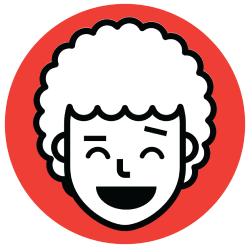If your child is taking, or will soon take, geometry you could inspire their interest in angles and physics by inviting them to play pool.
Cue sports, which includes pool and billiards, offer tons of opportunity to add math to the conversation. Use math to predict where the ball will go if you hit from various angles and distances, so you can make the best shot. It will help you and your kids shoot more accurately, and win more often.
The most popular game on the pool table is “8 ball” but there are other games, too. No matter which game you play, understanding the underlying rules of geometry, trigonometry, and physics, will help you sink a ball into a pocket.
Straight Shots
A “straight shot” is when a player hits the cue ball into the object ball directly into the pocket, without bouncing off the rail. In other words, the cue ball, object ball, and pocket are in a straight line. Straight shots are usually the easiest shot to make, but the degree of difficulty depends on the distance between the cue ball, object ball, and the pocket. Errors like spin or “English” get amplified the greater the distance is between objects. Proper body position, including the angle of the elbow, and the distance of the hand from the end of the cue stick improves accuracy. Use math to teach your kids how to improve their straight shot!
Mathematician Rick Mabry used trigonometry to find the most difficult straight shot, which is when the distance from the pocket to the cue ball is 1.618 times the distance from the pocket to the object ball. You may recognize this famous number as Phi, or the golden ratio.
Angle Shots
Players make an “angle shot,” “cut shot”, or “slice shot” when a straight shot is not available. Most pool shots will be an angle shot. The degree of difficulty depends on the angles involved. The larger the angle the harder it will be to make the shot.
Intermediate and advanced pool players use “The Law of Reflection.” The law says a ball will bounce off the side of the table (the rail) at the same angle at which it hits the rail. For example, if a ball hits the rail at an angle of 40 degrees, it will bounce off the rail at an opposite angle of 40 degrees. Using this law, you can predict where the ball will go based on the angle it approaches the rail. Good pool players are able to judge these angles by sight. Learn more about angle shots by watching this video from PBS.
If your children want to impress their friends with their pool skills, show them how to use math to improve their game. Next time you go plan to go a restaurant with a pool table, or if you have one in your basement, look at these resources first.
Types of pool games
How to Play Pool like a Mathematician
How to Make a Straight Shot
Best body position for accurate shots
How to Make a Cut Shot
Mathnasium of Littleton reminds you to look for opportunities to show kids that math is everywhere. We want to help families add conversations about math into their everyday lives. The more fun kids have with math, the more motivated they will be in math. Families often do not realize that their favorite pastimes can also help build math skills.
If you want more ways to incorporate math into daily life read these articles.
Some of the Coolest Numbers are Irrational!
Board Games Reinforce Math Skills and Keep Your Kid From Being Bored This Summer
Fun Card Games to Reinforce Math Skills
This Spring Take Math Outside
The One Game Every Child Should Play to Get Smarter
A Great Career Option for Kids Who Love to Draw
Inspire Your Child in Geometry Using the Art of Origami
Should Your Child Play a Musical Instrument to Develop & Support Math Skills?
Want to learn more about our math programs? Find out what parent like you are saying.





Call us at 303-979-9077 and Let's Get Started!
Next - Visit our Teaching Methods page or Promotions page
This article is copyright protected. Mathnasium of Littleton has permission to use it. Other Mathnasium locations must purchase it at http://hdwrite.com before using it.

 877-601-6284
877-601-6284 877-601-6284
877-601-6284




















